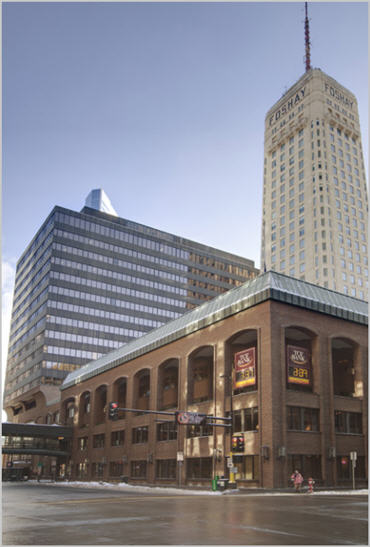|
Minneapolis, nicknamed "City of Lakes" and the "Mill City," is the county seat of Hennepin County, the largest city in the U.S. state of Minnesota, and the 47th largest in the United States. Its name is attributed to the city's first schoolteacher, who combined mni, the Dakota word for water, and polis, the Greek word for city.
Minneapolis lies on both banks of the Mississippi River, just north of the river's confluence with the Minnesota River, and adjoins Saint Paul, the state's capital. Known as the "Twin Cities," Minneapolis-St. Paul is the 13th-largest metropolitan area in the U.S., with 3.5 million residents. The Metropolitan Council estimated the city's population in 2014 as 411,273.
The city is abundantly rich in water with over twenty lakes and wetlands, the Mississippi river, creeks and waterfalls, many connected by parkways in the Chain of Lakes and the Grand Rounds Scenic Byway. It was once the world's flour milling capital and a hub for timber, and today is the primary business center between Chicago and Seattle. Named America's most literate city, it has cultural organizations that draw creative people and audiences to the city for theater, visual art, writing, and music. The community's diverse population has a long tradition of charitable support through progressive public social programs, as well as private and corporate philanthropy.
|

|